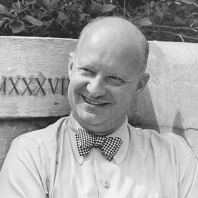Paul Hindemith
Compositeur
Découvrez les œuvres du compositeur Paul Hindemith – interprétées par les Berliner Philharmoniker dans le Digital Concert Hall.
Born in Hanau in 1895, Paul Hindemith came from a music-loving, working-class family. He performed as a chamber musician from early childhood onwards, an activity he later continued as violist with the internationally successful Amar Quartet. His training in Frankfurt was followed by a position as concertmaster at the opera house in Frankfurt. In the early 1920s, Hindemith became famous for the succès de scandale of his three operas-one-act Mörder, Hoffnung der Frauen, Das Nusch-Nuschi and Sancta Susanna. In 1938, Hindemith, whose music was denounced as “degenerate” by the Nazi regime, went into exile, first to Switzerland and then to the United States, where he became a respected professor at Yale University. In 1953, the musician returned to Europe and settled in Switzerland. As a composer of operas, chamber, orchestral and vocal music, Hindemith left behind an exceptionally extensive oeuvre. He made a special contribution to the viola repertoire, which he enriched with numerous notable pieces. Hindemith performed frequently with the Berliner Philharmoniker as a violist and conductor from 1922 until his death. When Wilhelm Furtwängler published an article in favour of the composer for the premiere of the symphony Mathis der Maler in 1934, the then chief conductor temporarily fell out of favour with the National Socialists. In 1957/58, he composed a piece for the Berlin Philharmonic Octet, which he performed on the viola together with the ensemble. In 2004, the Philharmoniker, Simon Rattle and pianist Leon Fleisher gave the posthumous premiere of Hindemith’s Klaviermusik mit Orchester.